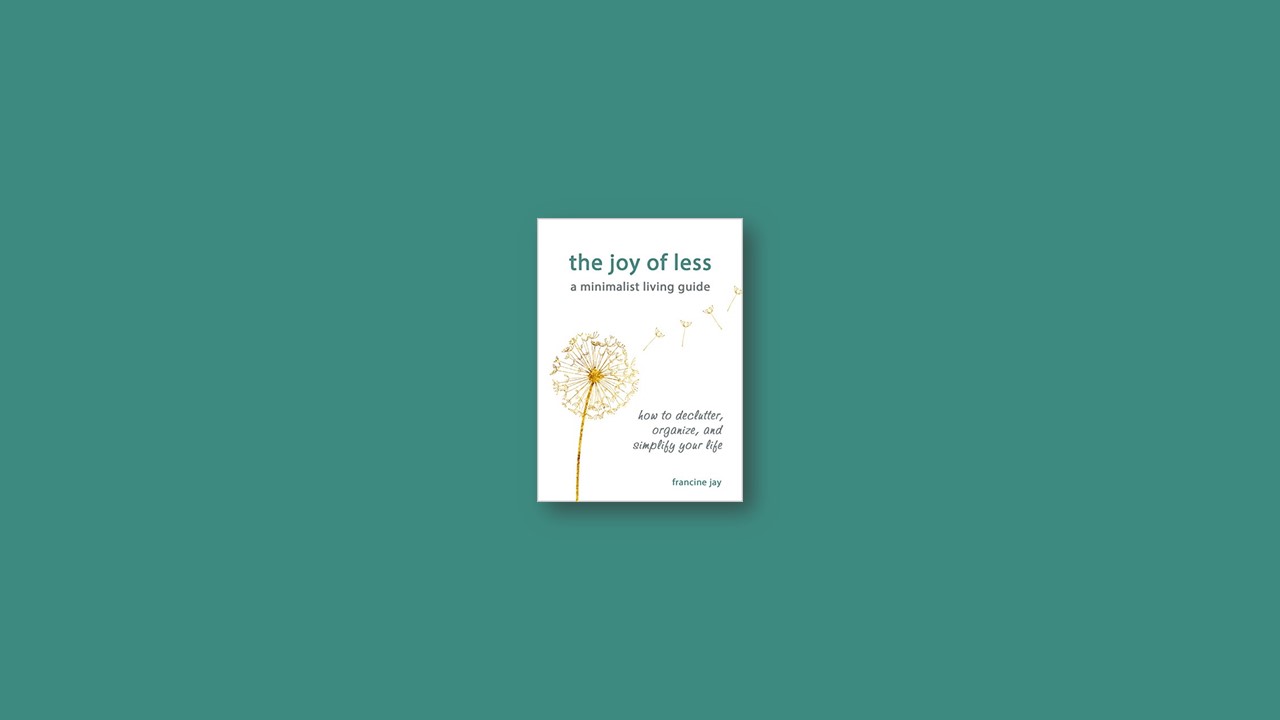See your stuff for what it is
Take a look around you; chances are, at least twenty or thirty items are in your direct line of vision. What is this stuff? How did it get there? What is its purpose?
It’s time to see our stuff for what it is. We want to name it, define it, and take the mystery out of it. What exactly are these things we spend so much time and energy acquiring, maintaining, and storing?
Useful Stuff, Beautiful Stuff, Emotional Stuff
Generally speaking, our stuff can be divided into three categories: useful stuff, beautiful stuff, and emotional stuff.
Let’s start with the easiest category: useful stuff. These are the items that are practical, functional, and help us get things done. Some of them are essential to survival; others make our lives a little easier. It’s tempting to think that all our stuff is useful—but have you ever read a book on survival techniques? It’s quite illuminating how little we actually need to keep ourselves alive: a simple shelter, clothing to regulate our body temperature, water, food, a few containers, and some cooking implements. (If this is all you own, you can stop reading now; if not, join the rest of us, and press on!)
Beyond the bare essentials are items not necessary to survival, but still very useful: beds, sheets, laptops, tea kettles, combs, pens, staplers, lamps, books, plates, forks, sofas, extension cords, hammers, screwdrivers, whisks—you get the picture. Anything you use often, and which truly adds value to your life, is a welcome part of a minimalist household.
Ah, but remember: to be useful, an item must be used. That’s the catch: most of us have a lot of potentially useful things that we simply don’t use.
Aesthetic appreciation is an important part of our identities, and should not be denied. The brilliant glaze on a beautiful vase, or sleek lines of a modernist chair, may bring a deep and joyful satisfaction to our souls; therefore, such items have every right to be part of our lives.
Now if all the stuff in our houses were either beautiful or useful, this would be easy. But as sure as the day is long, you will come across plenty of items that are neither. So where did they come from, and why are they there? Nine times out of ten, they represent some kind of memory or emotional attachment: your grandmother’s old china, your dad’s pipe collection, that sarong you bought on your honeymoon.
Again, if the item in question fills your heart with joy, display it with pride and enjoy its presence. If, on the other hand, you’re holding on to it out of a sense of obligation or proof of an experience then some soul-searching is in order.
As you walk around your house, have a conversation with your stuff. Ask each item, “What are you and what do you do?” “How did you come into my life?” “Did I buy you, or were you given to me?” “How often do I use you?” “Would I replace you if you were lost or broken, or would I be relieved to be rid of you?” “Did I ever want you in the first place?” Be honest with your answers—you won’t hurt your stuff’s feelings.
In the course of asking these questions, you’ll likely come across two sub-categories of stuff, one of which is “other stuff’s stuff.” You know what I mean—some stuff just naturally accumulates other stuff: like accessories, manuals, cleaners, stuff to go with the stuff, display the stuff, contain the stuff, and fix the stuff. There’s some great decluttering potential here: ditching one thing could lead to a cascade of castoffs!
You are not what you own
It’s not easy to be a minimalist in a mass media world. Advertisers constantly bombard us with the message that material accumulation is the measure of success. They exploit the fact that it’s a lot easier to buy status than to earn it. How many times have you heard that “more is better,” “fake it ‘til you make it,” or “clothes make the man?” They tell us that more stuff means more happiness, when in fact, more stuff often means more headaches and more debt. The purchase of all this stuff is certainly benefiting someone…but it’s not us.
Truth be told, products will never make us into something we’re not. Designer handbags won’t make us rich, premium lipsticks won’t make us supermodels, and expensive pens won’t make us successful executives. Pricey garden tools won’t give us green thumbs, and high-end cameras won’t turn us into award-winning photographers. Yet we feel compelled to buy, and keep, stuff that holds a promise—to make us happier, prettier, smarter, a better parent or spouse, more loved, more organized or more capable.
But consider this: if these things haven’t delivered on their promises yet, it may be time to let them go.
Less stuff = less stress
Being the caretaker of all our things can be a full-time job. In fact, entire industries have sprung up to help us service our stuff. Companies make fortunes selling us specialty cleaning products for every item—detergents for our clothes, polishes for our silver, waxes for our furniture, spray dusters for our electronics, and conditioners for our leather. The insurance business flourishes on the chance that our cars, jewelry, or art might be damaged or stolen. Locksmiths, alarm companies, and safe manufacturers promise to protect our things from theft. Repairmen are standing by to fix our stuff when it breaks, and movers are ready to gather it all up and schlep it someplace else.
With all the time, money, and energy it demands, we may start to feel like our stuff owns us—instead of the other way around.
Let’s take a breather, and reminisce about how carefree and happy we were in college. Not coincidentally, that period was likely when we had the least amount of stuff. Life was so much simpler then: no mortgage, no car payments, no motorboat to insure. Learning, living, and having fun were far more important than the things we owned. The world was our oyster, and anything was possible! Now that’s the joy we can recapture as minimalists. We simply need to put our stuff in its place, so it doesn’t command the lion’s share of our attention.
Be a good gatekeeper
It’s pretty straightforward, actually. Things come into our houses by one of two ways: we buy them, or they’re given to us (in other words, we get them for free). No matter what we’d like to think, they don’t slip in when we’re not looking, seeking shelter from the great outdoors. They don’t materialize out of thin air, nor are they reproducing behind our backs (except perhaps the paperclips and Tupperware). Unfortunately, the responsibility lies squarely on our shoulders: we let them in.
Our homes are our castles, and we devote plenty of resources to defending them. We spray them with pest control to keep the bugs out; we use air filters to keep pollutants out; and we have security systems to keep intruders out.
Of course, we have the power to exercise complete control over what we buy; we just need to use it. Don’t let down your defenses when something slips into your cart—in fact, don’t escort any item to the checkout counter without extensive questioning. Ask the following (in your head!) of each potential purchase: “Do you deserve a place in my home?” “What value will you add to my household?” “Will you make my life easier?” “Or are you going to be more trouble than you’re worth?” “Do I have a place to put you?” “Do I already have something that could accomplish the same task?” “Will I want to keep you forever (or at least a very long time)?” “If not, how hard will it be to get rid of you?”
See, that’s not too difficult. All we need to do is stop and think “Why?” before we buy.
Enjoy without owning
What if someone offered you the Mona Lisa—with the stipulation that you couldn’t sell it? Sure, you’d have the opportunity to gaze on a breathtaking painting twenty-four hours a day; but suddenly the responsibility of one of humanity’s greatest treasures would rest squarely on your shoulders. It’d be no small task to keep her secure from theft, clean from dust and debris, protected from sunlight, and stored at the optimum temperature and humidity. You’d no doubt also have to deal with a steady stream of art lovers wanting to view her. In all likelihood, any pleasure you’d derive from her ownership would be usurped by the burden of her care and upkeep. Before long, that mysterious smile may no longer seem so charming.
On second thought, thanks but no thanks—we’ll leave her in the Louvre instead!
We’re incredibly lucky, in our modern society, to have access to so many of mankind’s masterpieces—without having to acquire and maintain them ourselves. Our cities are such amazing resources of art, culture, and entertainment, we have no need to create artificial approximations of them within our own four walls.
For when we hang out in parks, museums, movie houses, and coffee shops—instead of trying to create similar experiences in our own homes—we become significantly more socially active and civically engaged. By breaking down the walls of stuff around us, we’re able to get out into the world and enjoy fresher, more direct, and more rewarding experiences.


